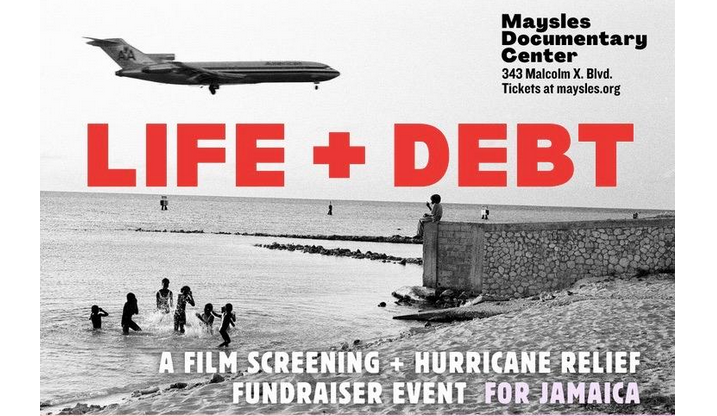Written by Rhonda L. Terry
Submitted by: Deardra Shuler
The name Roy Rudolph DeCarava should be a household name, not only for his important contribution to Black History via his photographic documentation of energy, movement and dynamics through his still life which was depictive of the 1950’s Renaissance era in Harlem. It also served to capsulize and memorialize his brilliant collaboration with Langston Hughes, one of the most intellectual minds to emerge from the Harlem Renaissance.
As Mrs. Sherry Turner DeCarava, wife of Roy DeCarava recalls, her husband was always interested in art as a youngster and how society evolves. “He had a great interest in wanting people to understand how their chosen profession and pursuits are key to unlocking answers to today’s questions,” remarked Sherry. “His comment was quite a needed statement to show just how connected we are as a society – whether as scientists, educators or as artists in their own right. ”
Mrs. DeCarava, who prefers to casually be called Sherry, is an independent scholar who has taken a special interest in the African American art form whether via writing, the visual and musical arts that is representative of the heart of Harlem such as Blues and Jazz. When Sherry first met her husband, Roy, she was initially quite taken by his book of photographic collections. It was this book of photographs that kept her attention and led her to invite him to speak at an art event at the Brooklyn Museum, where she worked between earning her Bachelor’s and Master’s Degree in Art History. While seeking active figures in the community, the name Roy DeCarava was at the top of her list. According to Sherry, she felt it was an opportunity to get to know people and observe the art scene, particularly the enriched community of Harlem, where artists of all kinds would reside, perform and walk the streets everyday.
Photography as an art form is quite interesting. We know that a photograph captures the moment, but Sherry put it more succinctly when she said: “Photography is the medium of the moment – both literally and philosophically. It is a medium that comes from an instantaneous object (the camera lens) and is also an instantaneous response to a multitude of things that are happening in any given second of time. It’s what you’re thinking, what you sense, what you feel – all of these things come into play in the making of a photograph.” She continued, “Photography is an alluring medium in the moment and I would say, the medium of the millennium. It’s simple to engage…yet it’s a more complex process as a cultural phenomena.”
Interestingly enough, DeCarava, who has had one of the longest careers in American photography, has been sharing his art form for almost seven decades. Within his lifelong collection the art enthusiast finds many things to relate to. For example, according to Sherry, “…you will find yourself in your time period in his work because you have all of these choices of eras via the diverse images in time the photographs were taken. The fact that so many people use the camera, have a camera and take pictures of a wide range of things testifies to its importance in our lives. Its importance bears further witness and I think we should be more conscious, read more and think more about this medium because it preserves the present and the past for the future and that’s pretty powerful,” remarked Ms DeCarava.
In DeCarava’s acclaimed book, “The Sweet Flypaper of Life,” readers will find a rich collection of photographs taken in the historic neighborhoods of Harlem. The live shots candidly explore a closer look into the extraordinary lives of ordinary people. Closeups capture the depth of a stare to the silhouette of a Harlem woman leisurely looking out at the wonders of her community while sitting on her brownstone window sill. During the process of walking around Harlem and taking photographs of “ordinary” people engaged in life, DeCarava struck up conversations and developed new and highly respected friendships.
It was during these strolls that DeCarava spotted the noted writer, Langston Hughes. As it turned out, Mr. Hughes was very interested in cameras and photography thus invited DeCarava, to his home asking him to bring his photographs. After viewing DeCarava’s photographs, Hughes immediately suggested that DeCarava display his photographs in a show as well as put them in a book. DeCarava found it wasn’t going to be as easy as he thought to display his photographic work when he tried to show the work he had accumulated since the 1940’s to a publisher he hoped would take on the project. At that time there was not much support of Black culture. In an effort to support DeCarava and his work, Langston Hughes who had taken a personal interest in DeCarava’s collection of photos, shopped them around to different publishers, finally taking the collection to his own publisher, Simon and Schuster. It was there he was successful in getting his publisher to publish the book, under the condition Hughes himself agreed to write the literary pieces to accompany the photos. Hughes agreed and an artistic collaboration was formed.
Mrs. DeCarava stated that is was important to note that the pictures existed prior to the text declaring “…the photos and literary text came together as an incidental and random collaboration…they lived in this sweet and uneasy place where the pictures co-relate, integrate but yet are random.”
One day, Langston walked up to Roy DeCarava and pulled out of his back pocket a small soft cover book and handed it to DeCarava saying, “Well, here it is, man!” Roy was shocked by the size of the book, which differed from most art books in size. Rather than having a typically large hardcover book filled with his precious works (as most photographers prefer), readers could easily carry DeCarava’s photo collection in comfort.”
Hughes’s inscriptions inspired by the photographs were uncanny in his ability to capture the personalities of the people in the pictures without knowing anything about them prior to writing his literary comments about them. Although, the work went out of print on a few occasions, DeCarava and Hughes were so dedicated to the project they traveled from book store to book store delivering the book hand to hand until it became what we know today as an example of “self publishing.”
Eventually, the book was taken under the tutelage of DeCarava’s wife Sherry who opened her own press, hired staff and eventually adjourned to Italy to have the book pressed under the title “Sweet Flypaper of Life” where it received its last modern publishing and distribution.
Mrs. DeCarava believes that Roy DeCarava and Langston Hughes bonded over their dedication to the book forming a close and remarkable relationship. In fact, DeCarava became Hughes favorite photographer.
DeCarava put out another book requested of him by jazz musicians which he entitled, “The Sound I Saw,” that consisted of photos of NYC jazz musicians over the past 50 years. The photos in this book are due to be published by Sherry this year for Mr. DeCarava’s Centential celebration. There will also be a show/exhibit of Mr. DeCarava’s artwork at the David Zwirner Gallery in the Fall of 2019. The Zwirner Gallery is located at 34 East 69th Street, New York, NY. For more information on this event, call 212-201-0420.






